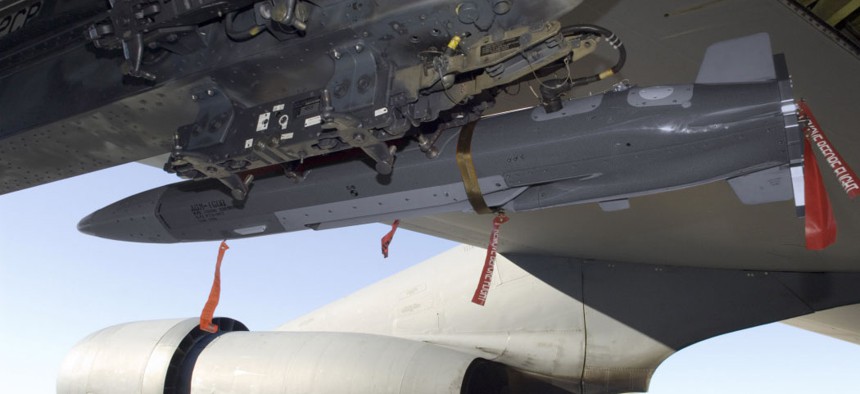Air Force looks to upgrade its EW jammers
Raytheon, maker of the MALD-J, receives a $34.8 million contract to improve the jammer’s flight and EW jamming capabilities.
The Air Force is looking to expand and upgrade its fleet of air-launched electronic warfare jammers, already in wide use, with a $34.8 million contract awarded to Raytheon.
The contract calls for Raytheon to upgrade current versions of the Miniature Air Launched Decoy-Jammer, known as MALD-J, improving its flight and EW jamming capabilities. The work is expected to be completed in 24 months.
The MALD-J is a fairly small, low-cost weapon that can be launched from fighters, bombers and other aircraft while in flight. In addition to jamming radar and other signals of adversaries, the aircraft also can protect manned aircraft by duplicating their flight profiles and drawing fire away from them. MALD-Js can be fitted with four interchangeable payloads specific to each mission and can be swapped into a host aircraft in about a minute.
That capability, called CERBERUS, was tested in September during the Navy's Northern Edge exercise in Alaska.
Under the new contract, Raytheon is to produce upgraded versions of the aircraft, to be called MALD-X, with flight tests scheduled for March 2018. A MALD is a little over 9 feet in length with a range of just under 500 nautical miles (575 land miles) and a maximum altitude of about 40,000 feet.
The MALD program, originally started by the Defense Advanced Research Projects Agency, has been around since 1995, when the military wanted to develop a decoy missile. In 2008, Raytheon, which also produced earlier versions, was given a contract to develop the MALD-J jamming variant, which was delivered in 2012. By May 2014, the company had delivered 1,000 MALD-Js. The Air Force ordered 250 more of them in March 2015.
Electronic warfare capabilities, which military leaders have admitted were often ignored during the conflicts in Iraq and Afghanistan, have become a focus for the Pentagon as its focus shits to more contested electromagnetic environments and more capable potential adversaries, such as Russia and China.
Although the MALD-J—soon to be MALD-X—has so far been used only by the Air Force, the Navy has expressed interest in developing its own variant, which would be designated MALD-N.





